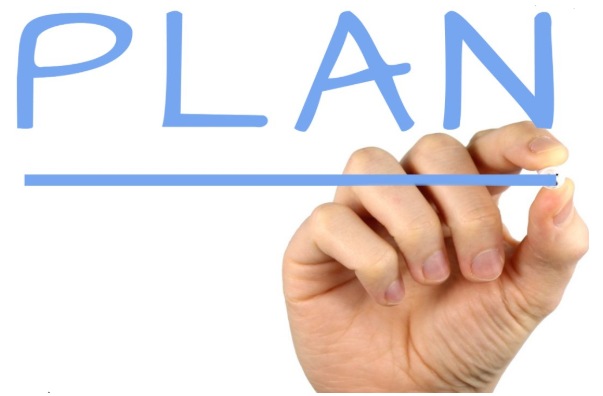
An influencer is exactly as it says. These are people based online that influence a market towards a product or service. From Computer Generated Influencers using CGI and nano-influencers to Instagram killing accounts with fake followers – 2018 was an activity-packed year for marketers. The list details some important insights from 2018 that will inform and will hopefully have an effect on your influencer marketing strategy for this year.
Have you heard of Lil Miquela? She’s a 19 year old singer and influencer from California, with 1.3 million followers on Instagram (@lilmiquela). This social media star was invited by Prada to take over its Instagram account during a recent Milan show. Time magazine named her as one of 2018’s 25 most influential people on the internet. So, what’s the catch?
She doesn’t exist. Miquela is a computer-generated model but brands are attracted to her!
So, lets look at other Influencer groups that are growing and some interesting info on this market.
1) Micro-influencers – Micro-influencers, or those with less than 100,000 followers, are the most sought-after influencers because marketers feel they are cost-effective and have a better connection with their audience.
2) Employees as influencers – Last year Macy’s hired its employees as brand ambassadors within Macy’s Style Crew program. The staff can share Macy-sponsored content to their respective social media feeds, including short video clips.
3) Instagrandmas and Instagrandpas – In an April 2012 survey by the Pew Research Centre, it was found that more than half of adults aged 65 or over were internet users.
Unfortunately, most of these older adults don’t feel they are accurately reflected in today’s advertising. A research by media agency UM found that 68% of over 65’s believe ads in the UK often stereotype people in their age bracket.
It seems marketers are too focused towards targeting the younger generation or are clueless on how to connect with this older demographic.
L’Oréal also teamed up with Baddie Winkle (@baddiewinkle), an Instagram influencer who loves posing in skimpy swimsuits. With 3.8m followers on Instagram, she’s Instagram’s hippest grandma and has teamed with big fashion brands like Coachella, Missguided, and Fashion Nova. She even collaborated with a mobile investing app called Stash for their campaign which encourages young people to “retire like a Baddie” by investing in their futures.
She also teamed up with Dimepiece’s “State of Mind” campaign releasing some bold pictures wearing their signature badass streetwear – from mesh tunics and oversized jerseys to sexy swimsuits.
4) Local influencers – In 2017, Airbnb launched its #LiveThere contest in India. The contest winners visited their favourite destinations with popular celebrities – Nikhil Chinapa in Thailand; Anusha Dandekar in Milan; and Radhika Apte in London. These celebrities shared insights based on their respective interests to help the winners experience these cities like a local.
Local influencers are increasingly becoming a critical aspect of global marketing strategy as they have a local online fan following with regard to their particular area of expertise and they are in a much better position to influence the decisions of their audience than a global influencer can.
5) Kids as influencers – There are 50 million kids aged 11 and under who represent over a trillion dollars in annual buying power. A study delivered by Facebook has shown that
- 64% of parents say their kids play a key role as the family decides on a holiday destination.
- 62% of parents of teen children believe their kids have more influence on their buying decisions than they had over their parents before them
- 71% of parents believe their kids influence them on how much they spend on products.
The influencer marketing industry is expected to be worth 5 to 10 billion dollars by 2020, and kids are becoming an important part of this scene as they can relate better to kids than a scripted traditional TV advertisement.
6) Trust & transparency – An interesting report in The New York Times provides insight to the “black market” of bot followers that can be bought for just a few pence each. These fake followers are being sold to celebs including athletes, politicians, and film stars in order to make them look more popular. Marketers and social channels are now proactively taking steps to address the issue of authenticity and credibility that plagues the influencer ecosystem.
7) Opportunities for creators & brands – There have been a host of developments last year aimed towards helping marketers and influencers collaborate with each other. We saw Snapchat delivering the “Snapchat Storytellers” pilot program that connects brands with popular content makers. Facebook also launched Brand Collab Manager to help marketers connect with relevant social media creators.
There has been concerted efforts by social channels towards helping creators earn money and grow their fan base. YouTube, the world’s largest video site, rolled out channel memberships, merchandising, marketing partnerships, and “Premieres” to help YouTube creators generate revenue from their videos outside of traditional advertising.
We also saw Snapchat opening commerce to Snap influencers and, last year Facebook ran a test for a Patreon-style membership model where fans could support their favourite creators with a monthly recurring fee.
8) Amazon and its influencer program – A recent report by Business Insider detailed that Amazon is expanding its influencer program by including several micro-influencers. Last year, the influencer marketing platform Influence.co created a tool specifically for Amazon to help brands match with relevant influencers. It’s also been reported that Amazon is offering hefty commissions to its influencers for selling products.
It’s indicative that Amazon is upping its influencer game by competing with the leading fashion brands. Other categories include furniture sales by which the influencers can earn 8% commission. Non- Amazon apparel, shoes and jewellery will net influencers 7% commission. Influencers will receive the same 7% of commission for the sale of Amazon products such as the Echo and Fire.
What sets the Amazon’s influencer program apart from others is the way Amazon has structured the payout model. Unlike others, Amazon doesn’t pay its influencers to deliver a message. It pays commission when influencers bring in paying customers.
9) Collaboration between CGIs and brands – Shudu (@shudu.gram) the world’s first digital supermodel, made her Instagram debut with a breath-taking post where she posed nude with a stack of gold chokers around her neck and giant earrings. Soon after this, Rihanna’s Fenty Beauty line reposted a shot of Shudu with bright tangerine lips.
10) Influencers working as real partners – In the early years, the relationship between a brand and an influencer was seen with a transactional approach. Brands provided the influencers with product samples and the influencer featured these products in their content in a positive way. Typically, the role of influencers was limited to the top funnel of the customer journey. These dynamics still exist; however, we are now seeing an emerging trend of influencers playing a direct role in sales. For example, Maybelline New York ran a successful live streaming event featuring celebrity Angelababy on social media app Meipai selling 10,000 lipsticks in 2 hours. Another famous example is that of Chinese fashion blogger Becky Li who sold 100 limited-edition Mini Cooper cars in just 5 minutes via the popular Chinese WeChat app.
Influencers are looking for meaningful relationships with brands. They don’t want their roles to be simply limited to content creators – they want to get actively involved with brands as real partners.
The Takeaway – Authenticity is the key – users are reluctant to trust online communication from brands. Brands now realise this fact and are therefore trying to find and collaborate with the right influencers to deliver their brand message. We will be seeing far more influencers co-designing products and participating in conversions and sales in a more direct way over the coming months.




